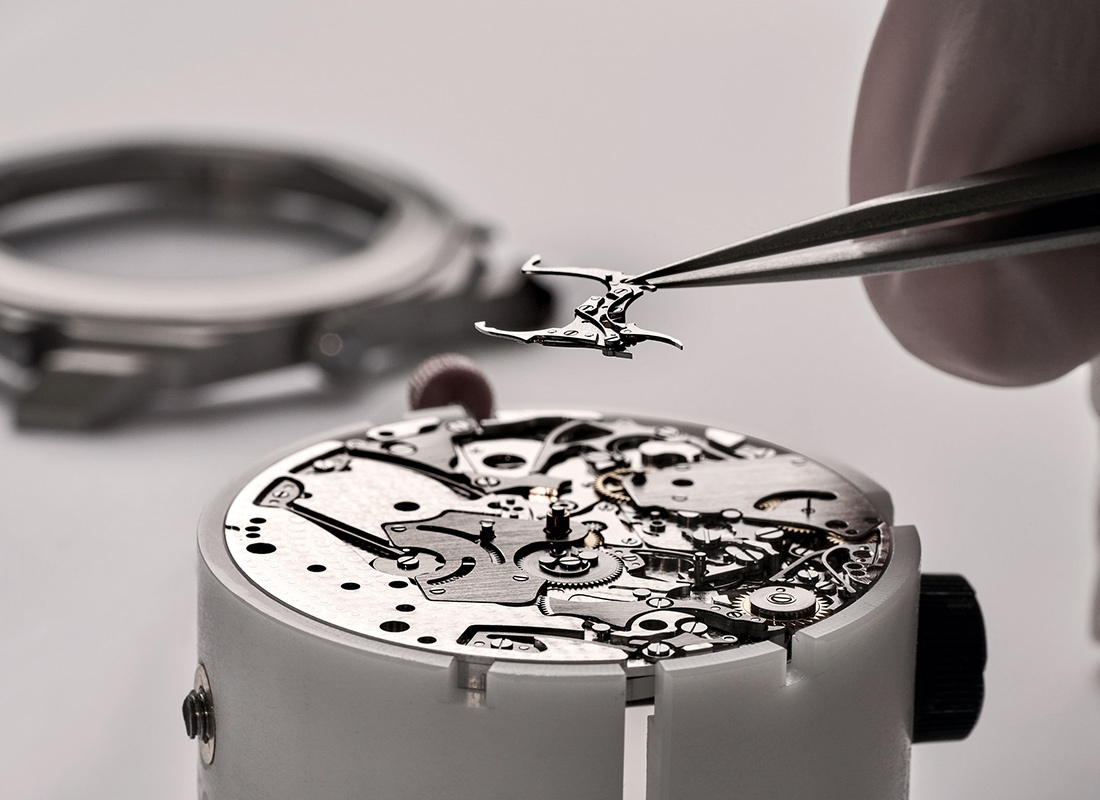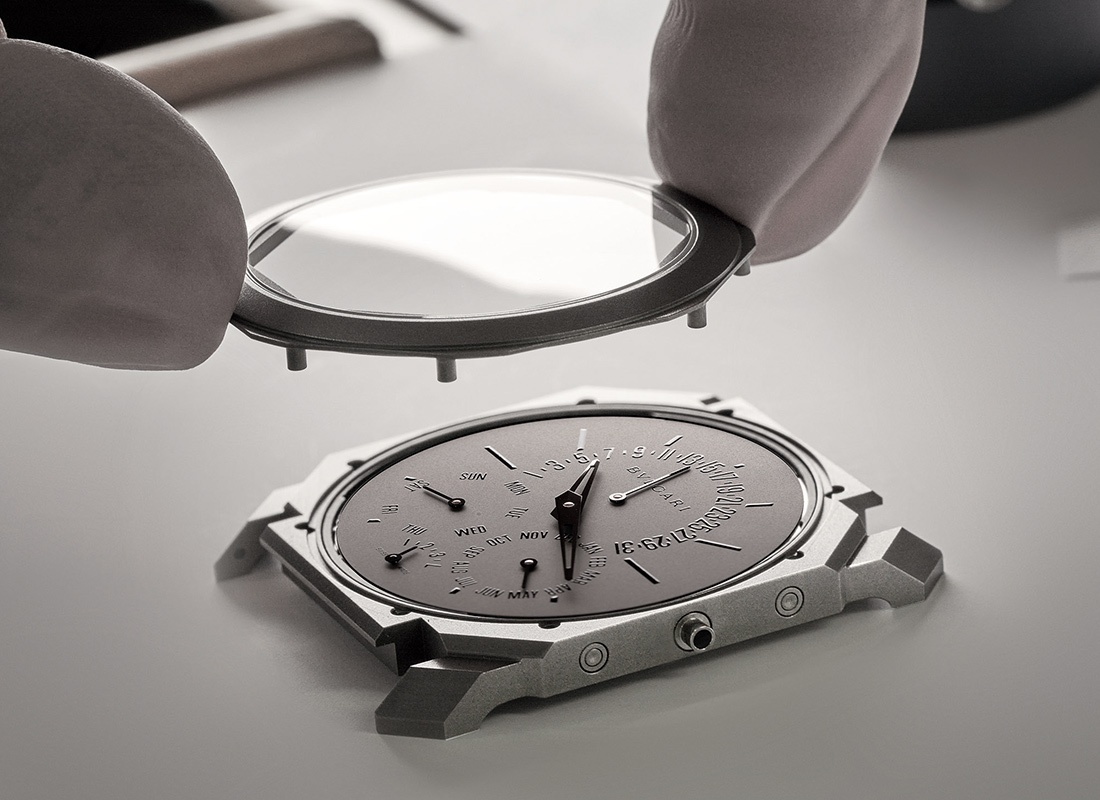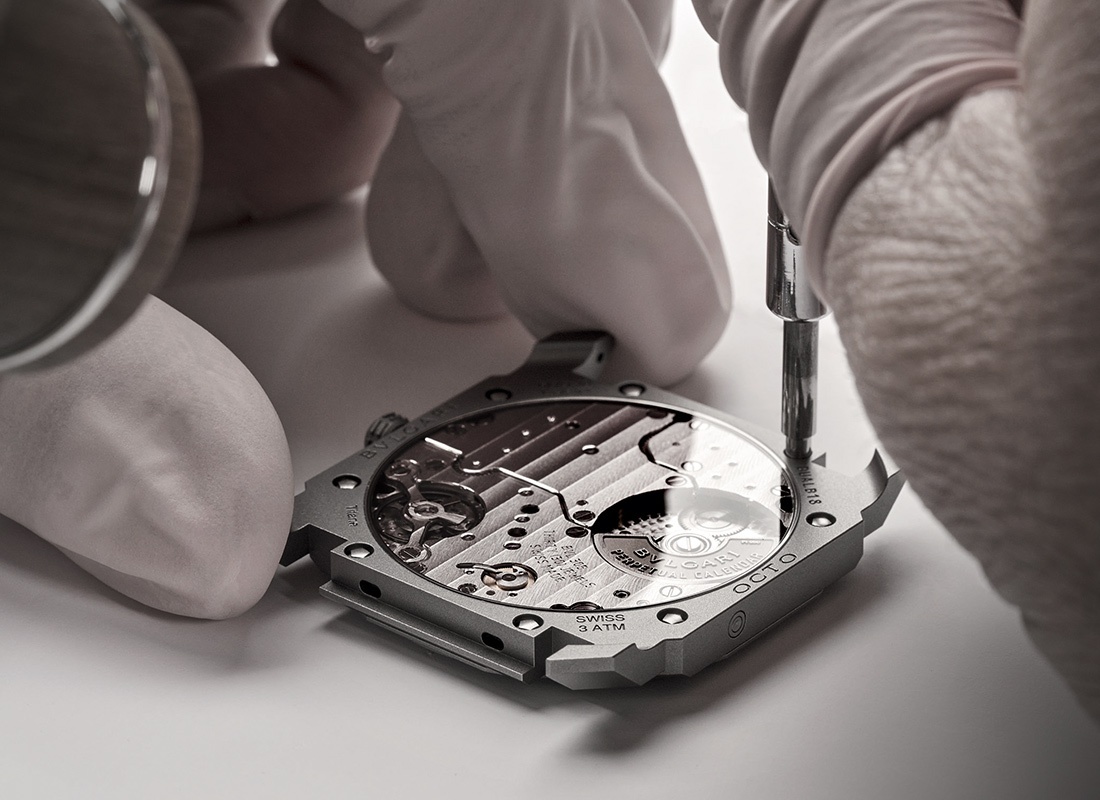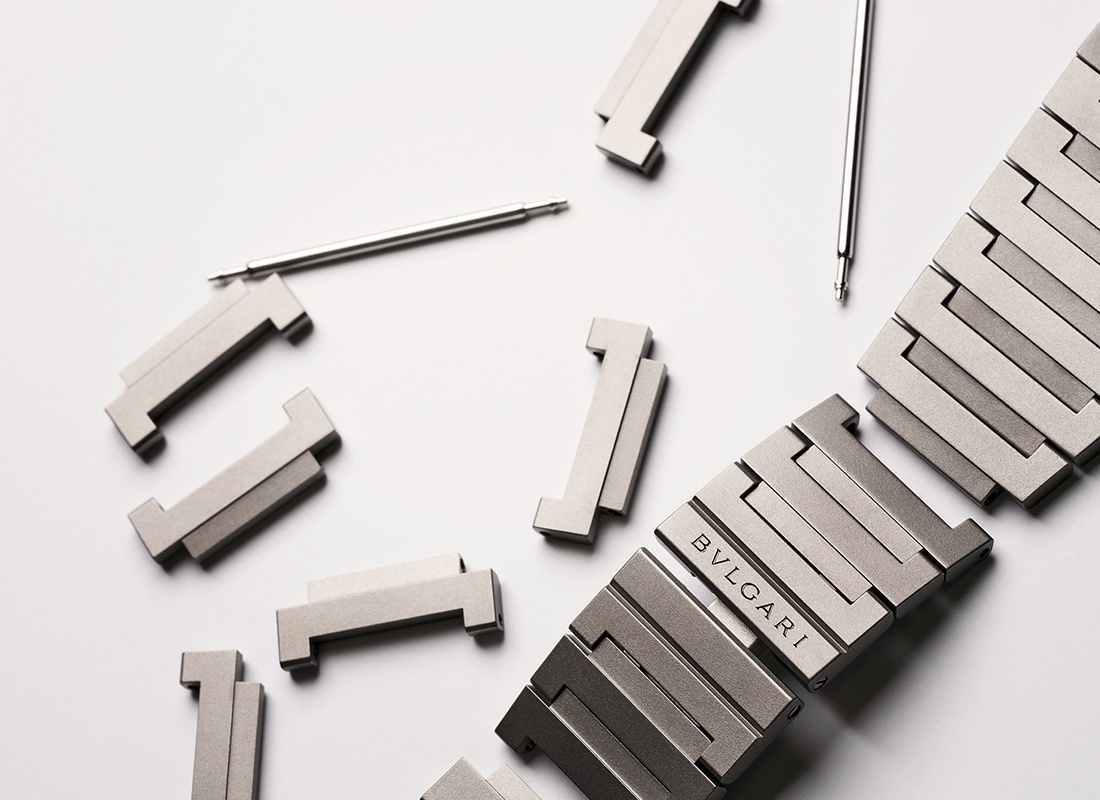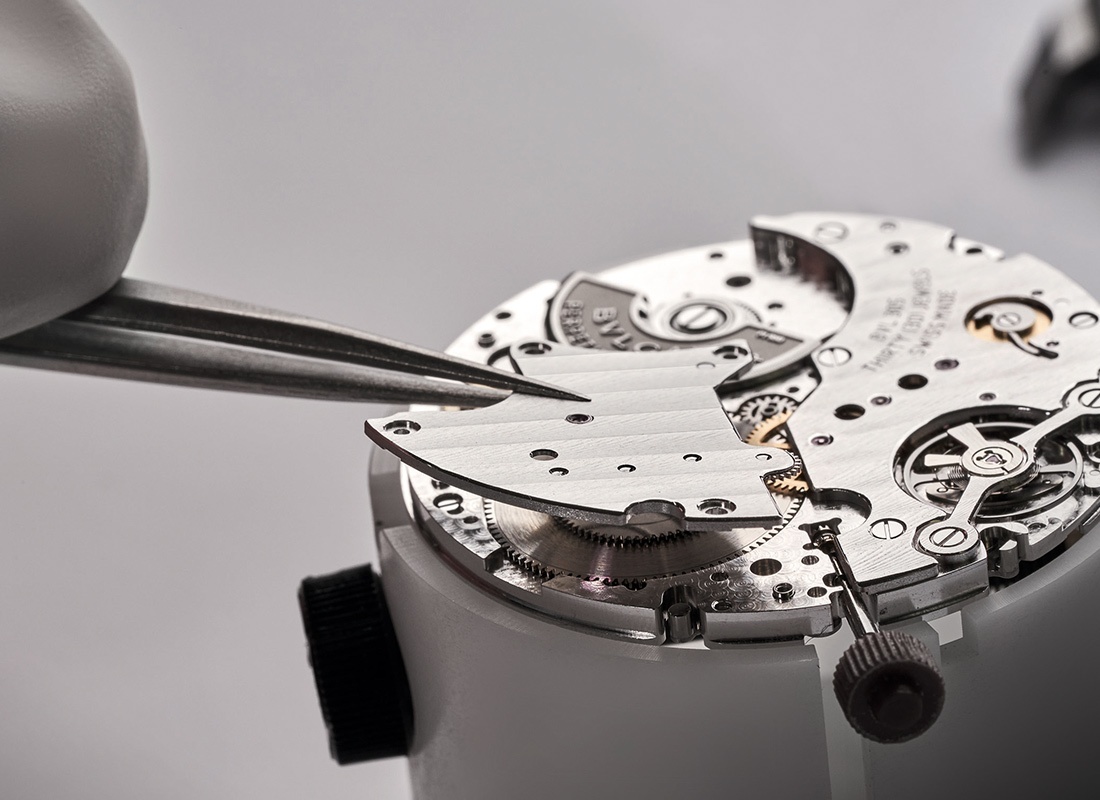MECHANISM OF THE BVLGARI OCTO FINISSIMO PERPETUAL CALENDAR WATCH

The Octo Finissimo collection has undoubtedly left a significant mark on the Haute Horlogerie landscape in a very short time. Continuing a series of studies of the possibilities of ultra-miniaturization in the field of automatic mechanisms, minute repeaters, chronographs, and tourbillons, Bvlgari presents the Octo Finissimo Perpetual Calendar watch, the thinnest perpetual calendar in the world. The new record-thin watch is available in two versions: in a proprietary titanium matte design, like all other Bvlgari models that have been noted for world achievements, as well as in platinum.
Aesthetics are inseparable from functionality when it comes to reinterpreting refined classic complex watch mechanics in a decidedly up-to-date manner. What is the result? At least 408 parts interacting inside the extremely limited space of the Octo Finissimo Perpetual Calendar case, which is only 5.80 mm thick. The development of the 2.75 mm caliber required the designers of the Le-Sentier manufactory to use new solutions, such as the use of an automatic winding system with a micro-rotor, which made it possible to optimally dispose of the space between the components of the watch movement without having to reduce their size.
In this sense, the function of the perpetual calendar comes closest to perfection, and the Octo Finissimo Perpetual Calendar offers a new and talented interpretation of it, in which perfection in clockwork mechanics is combined with the aesthetic sense inherent in Italians. The watch is available in two versions — titanium and platinum. The owner of the watch will be able to find out the time and date until February 2100, without having to worry about manually setting up the calendar device. Only in 2100, it will need to be corrected, since this will be a normal, non-leap year... But descendants will probably have to take care of this. The Octo Finissimo Perpetual Calendar watch will undoubtedly leave its mark on the turn of the century as one of the most relevant models, but at the same time, it will allow us to look even further ahead, preparing us for the coming of the XXII century.



